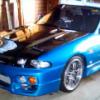Advantages And Disadvantages Of An Rb30det?
Announcements
-
Similar Content
-
Latest Posts
-
They kept the product number the same, so we "didn't pick it up when packing your order". If you packed the order, you clearly saw the box wasn't Hella...
-
Actually, the equivalent skyline part is both cheaper and simpler, maybe you should come back from the dark side?
-
And we are full
-
By soviet_merlin · Posted
Oooh, you mean the people sending knockoff products aren't even trying anymore. I thought you meant companies 🤦♂️
-







Recommended Posts
Create an account or sign in to comment
You need to be a member in order to leave a comment
Create an account
Sign up for a new account in our community. It's easy!
Register a new accountSign in
Already have an account? Sign in here.
Sign In Now